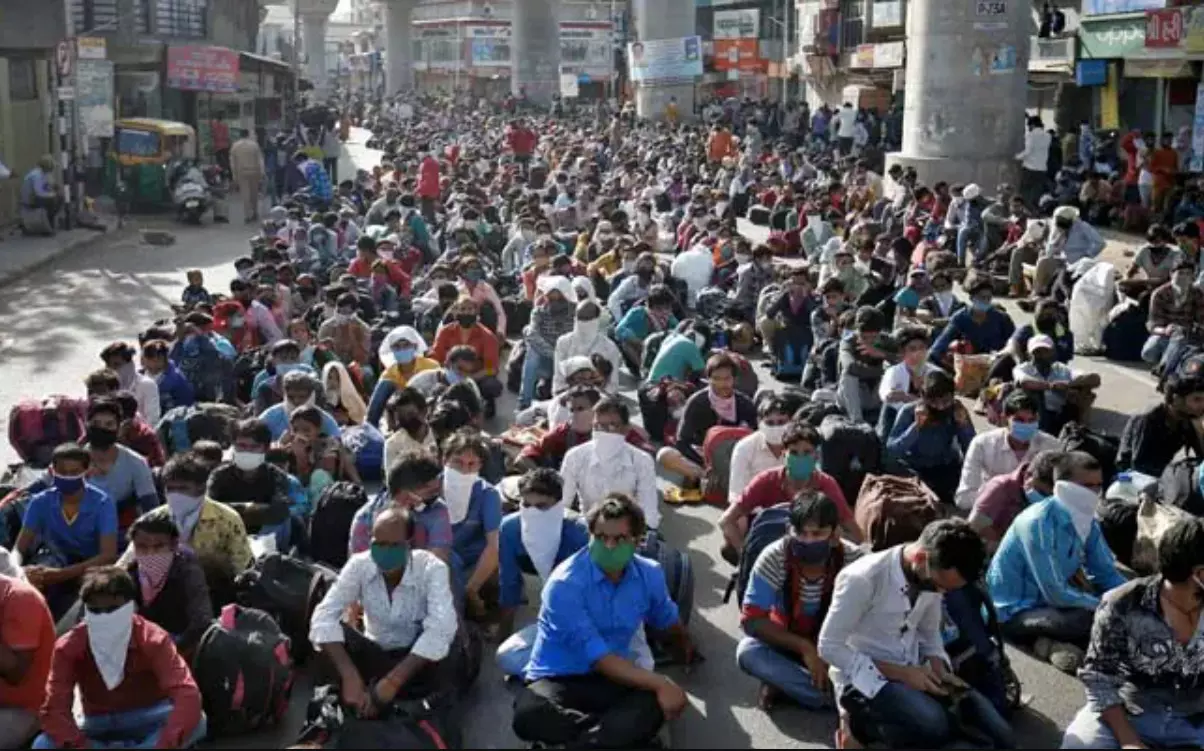A Double Dilemma
India’s interrelated fight against corruption and unemployment is crucial for inclusive growth, as systemic graft cripples job creation, erodes public trust, and wastes its youth potential

India, with 1.4 billion people and the world’s fifth-largest economy, faces two deeply intertwined challenges—corruption and unemployment. These issues not only impede economic growth but also undermine public trust and frustrate youth aspirations. This article examines how corruption hinders job creation and explores reform strategies drawn from national and global best practices. Addressing corruption is crucial to unlocking India’s demographic potential and ensuring inclusive development
Introduction
India presents a paradoxical narrative: a rising economic power with robust technological innovation, yet burdened by persistent corruption and widespread unemployment. These issues are not independent; they are mutually reinforcing. Corruption diverts resources, distorts public recruitment, and hampers investment, while unemployment breeds disenchantment and fuels informal, corrupt practices.
The Mirage of Progress
While the official unemployment rate (Periodic Labour Force Survey) for 2023–24 stands at a modest 3.2 per cent, a deeper examination reveals a more alarming scenario. In urban India, nearly 10 per cent of youth aged 15–29 is unemployed. Among graduates, the rate is even higher—approximately 18 per cent—indicating a severe mismatch between education and market demand. In states like Kerala, over 30 per cent of graduates are without work despite high educational attainment. Similarly, Haryana reports an urban youth unemployment rate of 23.4 per cent. These figures call into question the efficacy of current educational and employment frameworks. Women face compounded challenges. Although female labor force participation has risen to 41.7 per cent, rural women predominantly engage in low-paid agricultural work. Urban women, despite being more educated, contend with wage discrimination and safety concerns. The economic system fails to convert their labor into meaningful livelihoods.
Corruption: The Silent Job Killer
Corruption significantly inhibits job creation. India’s ranking of 96 in the 2024 Corruption Perceptions Index reflects systemic governance failures. Public programmes meant to provide employment are often hijacked by corruption at multiple levels. For instance, the Mahatma Gandhi National Rural Employment Guarantee Act (MGNREGA) is frequently manipulated. In Bihar, thousands of fraudulent job cards have surfaced, diverting funds from real beneficiaries. Aadhaar-based payments, meant to increase transparency, have inadvertently excluded 34 per cent of women in some regions due to faulty biometrics and poor connectivity. Corruption in public sector recruitment is another dark spot.
From the Vyapam scam in Madhya Pradesh to the more recent West Bengal School Service Commission (WBSSC) recruitment scandal, bribery and favoritism have eroded public trust. Qualified candidates are left unemployed while positions go to the highest bidders, undermining meritocracy and pushing thousands of capable youth into despair. Similar malpractices in railway and state-level exams have further demoralised the youth. Infrastructure, a traditional driver of employment, has also been impacted. The Mumbai-Ahmedabad Bullet Train project, a flagship initiative, remains stalled due to land acquisition controversies. Overall, ₹5.71 lakh crore is locked in 458 delayed projects, denying employment to thousands. Skill development programmes are similarly compromised. In Uttar Pradesh, the Pradhan Mantri Kaushal Vikas Yojana (PMKVY) has witnessed fraudulent enrollments and substandard training. Only 18 per cent of participants have secured formal jobs, highlighting systemic inefficiencies.
The Ripple Effect
The consequences of corruption transcend economic dimensions. Institutional credibility suffers, deterring both foreign and domestic investment. In 2023–24, FDI declined by 22 per cent as investors reacted to India’s uncertain and often opaque regulatory environment. Entrepreneurs face a convoluted system of approvals and unofficial payments, discouraging innovation. The manufacturing sector, essential for absorbing labor, grew by a mere 3.4 per cent, inadequate for the 12 million youth entering the workforce annually. This stagnation breeds disillusionment. Surveys indicate that 65 per cent of Indian youth aspire to emigrate, citing lack of meritocracy and limited opportunities. Social media platforms echo these frustrations, with hashtags like #JoblessIndia reflecting a growing sentiment of despair.
Reimagining the Future
Addressing this dual crisis requires systemic reforms, not superficial ones.
1. Institutional Integrity and Legal Enforcement
Karnataka’s Anti-Corruption Bureau, which achieved 83 convictions in 2023, exemplifies effective enforcement. Expanding such models across India, with empowered Lokpal and Central Bureau of Investigation (CBI) bodies, is essential for restoring public trust.
2. Leveraging Technology
Technological interventions offer scalable solutions. Andhra Pradesh’s Real-Time Governance initiative reduced tender processing delays by
40 per cent. Telangana’s AI-driven audits saved ₹1,200 crore in public funds. National-level digital dashboards for welfare tracking could enhance transparency and reduce pilferage.
3. Community Participation
Rajasthan’s social audits recovered ₹220 crore from MGNREGA-related fraud, demonstrating the effectiveness of citizen oversight. Kerala’s grievance redressal portals, resolving 85 per cent of public complaints, highlight the importance of responsive governance.
4. Ethical Private Sector Engagement
Tata Steel’s operations in Odisha created 8,000 jobs through sustainable mining practices. MSMEs, supported by transparent digital credit systems, accessed ₹1.5 lakh crore in loans. Offering tax benefits for ethical business practices can promote a culture of integrity.
5. Education-Industry Linkages
Successful models, such as the collaboration between IIT Bombay and Siemens AG, have achieved 80 per cent placement rates in automation roles. Expanding apprenticeship programmes, modeled after Germany’s dual education system, could provide hands-on training to 1.2 million youth annually.
The Clock is Ticking
India’s demographic dividend, with 65 per cent of the population under 35, represents a massive opportunity—but only if channeled correctly. The 2024 general elections showed that youth are
growing impatient; 62 per cent identified unemployment as their top concern. Yet, hope persists. International examples—from Estonia’s e-governance to Rwanda’s anti-corruption courts—demonstrate that transformational change is achievable. India must recognise that corruption is more than a legal violation; it is the systematic theft of its people’s future. Eradicating corruption and creating meaningful employment are not parallel goals—they are interdependent. Only by tackling both can India unlock a future where development is not a privilege, but a right for every citizen.
Debasish Sur is Professor, University of Burdwan; and Manik Chakrabarty is Assistant Professor, St. Xavier’s University, Kolkata. Views expressed are personal



